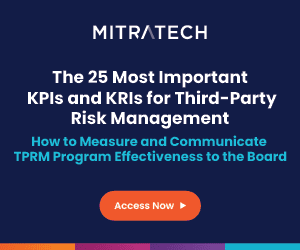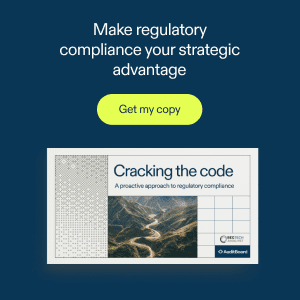With the emergence of the COVID-19 virus and social unrest, most organizations face an uncertain future. There are exciting market opportunities as well as emerging threats. Protiviti’s Jim DeLoach asserts that, with disruptive change the norm, directors and executives must ask a fundamental question: “are we future ready?”
“Future ready” is a term that takes on a clear meaning in a highly disruptive and increasingly complex world. Simply stated, do the board’s and executive management’s composition, focus and agenda position them to best serve the company and its stakeholders and achieve sustainable, long-term growth and profitability for shareholders? “Future ready” captures an action orientation that directors and executives should consider carefully in order to face the future with confidence. How do directors and executives assess whether they and the companies they oversee and manage are truly focused on the future? Following are 10 suggestions as to what is expected of a future-ready board and executive team.
1. Engage in Big-Picture, Out-of-the-Box, Bold and Disruptive Strategic Thinking
Enough agenda time and focus should be allocated to strategy setting, challenging strategic assumptions, exploring “what if?” questions, reviewing scenario and contrarian analysis results, considering M&A and partnering opportunities and re-imagining the company’s position within the value chain. The future-ready board and executive team are resourceful in discovering outside perspectives, tapping new sources of talent and unleashing the collective genius of the organization. Further, they integrate into the boardroom and C-suite dialogue fresh thinking and points of view regarding market developments and trends and their strategic implications, particularly when there are shifts in strategic context.
For example, directors and executives who are prepared to face challenges are sensitive to the vital signs of disruptive change and, as early movers, act on those signs in pursuing market opportunities and addressing emerging risks. They are proactive in ensuring disruption considerations are integrated into strategy and performance assessments and decision-making processes and insist on making disruptive and atypical risks visible in board-management discussions. They are committed to continuous education and networking both in and outside the industry, with the intention of striving to learn as fast as the world is changing.
2. Support a Culture of Constructive Challenge with a Long-Term Focus
The focus of a company that takes the long view is on achieving equilibrium – balancing the entrepreneurial drive to create enterprise value with the appropriate prudence to protect enterprise value, consistent with the board- and CEO-approved risk appetite, such that the emphasis neither on creating value nor on protecting it is too disproportionately strong relative to the other. To support this, the board must have a deep understanding of the business so it can add value to the CEO’s decision-making in a constructive manner. And the CEO should encourage this kind of discussion.
The board itself should consist of a diverse group of independent directors armed with sufficient knowledge to challenge key assumptions underlying the strategy and business model, evaluate management and company performance, exercise appropriate due diligence and ask the tough questions when necessary, all with the objective of delivering long-term shareholder value.
3. Focus on Appropriate Sustainability Objectives in Delivering Acceptable Financial Results
The future-ready board and executive team are mindful of the developing interest in and potential impact of environmental, social and governance (ESG) issues on long-term value creation, and they ensure that leaders throughout the organization are as well, in formulating strategy and policy. The evolving business case, voluntary initiatives and disclosure by competitors, along with the specter of possible regulation, legislation and proxy battles in specific ESG areas (such as climate change and diversity), all fuel the board’s and executive team’s focus on integrating sustainability considerations into the strategy-setting process.
4. Foster Diversity in Skills, Experiences and Perspectives in the Boardroom, C-Suite and Management Ranks
Diversity starts at the top. Emphasis on diversity in director selection and in the C-suite facilitates the desired diversity outcomes within the executive ranks and throughout the organization. Gender diversity and pay equity are important priorities in many industries. The future-ready board and executive team understand that a diverse organization is likely to be better positioned to attract and retain top talent, expand into new markets and gain and sustain competitive advantage. Most important, there is also a strong focus on maintaining a talented, diverse executive bench to facilitate formulation of succession plans.
5. Be Passionate About Improving the Customer Experience Continuously
A strong focus on the customer experience leads to new innovations and differentiates offerings. Access to reliable market data and analytics regarding customer or consumer preferences and behavior guides decision-making the company innovates and adapts. If the COVID-19 pandemic has taught any lesson at all, it is that many companies need to adjust to evolving customer preferences. Agile is the name of the game.
Presently, we are seeing consumers make choices around convenience (e.g., home shopping and delivery, curbside pickup, home cooking, livestreaming and other home-centric behaviors). As these customer preferences evolve, companies must do everything possible to accommodate them to remain relevant. Therefore, directors and executives need to think about how the pandemic experience is likely to alter market expectations related to the products and services their companies offer. This will be a constant drill, as we may experience more change in the marketplace over the next two or three years than we have experienced since the turn of the century.
6. Think and Act Digitally
Future-ready boards and executive teams have access to the expertise and experience needed to understand how digital disruption can affect the organization and its business model, value proposition and industry. They encourage leaders across the company to align the velocity of decision-making processes to the speed of change and to immerse themselves in digital business concepts, building digital ecosystems and the potential of digital hyperscaling platforms that can facilitate rapid growth. They collaborate to spur initiatives to digitize new and enhanced products and services to strengthen customer engagement and relationships, and they deploy digital technologies to improve operational performance and information for decision-making.
7. Re-Imagine the Workplace
During the pandemic, we witnessed an acceleration of workplace redesign, increasing employee flexibility in many areas through a virtual work environment. In many businesses, the pandemic has proven that employees do not have to cluster physically in the same place to operate successfully. While answers to workplace-related questions will vary by company and industry and depend on availability of technology and bandwidth at remote locations, boards and executive teams that are focused on the future recognize that these answers will have powerful implications for employee flexibility, pollution levels, commercial real estate use, the technology the business needs and the way talent is recruited. They know it’s time to re-imagine the reasons why we “office” in the first place.
8. Drive and Track Innovation Performance
Both the board and executive team are future ready when they place sufficient emphasis on the company’s innovation strategy and culture and encourage out-of-the-box thinking and open discussion on direction and progress. The dialogue and monitoring process should be supported with appropriate innovation-specific metrics that tell the full story regarding the performance of the innovation and growth strategy relative to competitors, feedback on the customer experience, the return on investment and the effectiveness of the company’s innovation culture and capabilities.
9. Emphasize Effective Communications with Employees as Well as Shareholders
The CEO and executive team should communicate frequently, transparently and empathetically with employees and, when necessary, with customers, suppliers and communities in which the company operates. In periods of uncertainty, it is not possible to communicate and solicit feedback too often.
Future-ready directors and senior executives also place a premium on communicating with shareholders in proxy reports, at annual meetings and through other venues in accordance with the securities laws on relevant topics, including strategic direction and a compelling vision and mission. They also discuss the emerging and priority issues of the day – such as the safety of employees, customers and the community during the COVID-19 pandemic; the pandemic’s implications to the business; and the impact of trade policies on future growth – as well as progress with material ESG priorities (e.g., climate change and reskilling and upskilling the workforce) and other matters.
10. Nurture a Flexible, Adaptive, Resilient and Ethical Culture
Future-ready directors and chief executives ensure that management incentives and the reward system are in line with risk appetite and the organization is sufficiently adept and agile in navigating change in a complex, changing business environment. CEOs work closely with company leaders to ensure that the company’s culture is aligned with the enterprise’s strategy and core values, the mood in the middle is aligned with the tone at the top and any gaps between the current and desired culture are addressed in a timely manner. Building trust across the company is the priority. The board takes an active interest in the CEO’s initiatives on this vital front.
The above suggestions are not intended to be exhaustive, but they represent a good start at improving the board’s and executive team’s future readiness. There is, of course, the inevitable need for “blocking and tackling” around designating responsibilities for strategic execution, establishing accountability for results and monitoring and reporting on performance. In addition, the board and executive team must be conscious of reputation and brand image. But the preservation of reputation and brand image is a result of a combination of many factors, including strategic alignment, cultural alignment, commitment to quality, operational excellence and organizational resiliency.



 Jim DeLoach, a founding
Jim DeLoach, a founding 







